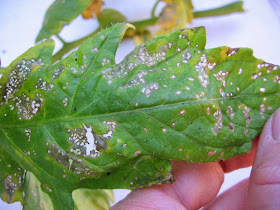Q. I've had my apricot tree about 15 years. Last year it had
a huge crop. This year it had lots of blossoms, swarms of bees, but almost no
fruit set. The remaining fruit has dropped off. There is sap on one of the
branches and I'm wondering if it has bugs or is it just is taking a year off?
 |
| See the "yellow" plum getting ready to drop? It will abort. The green ones will continue to develop. |
Flowering, followed by the dropping of small fruit, usually indicates poor pollination. Small fruit drops because the pollen was not transferred to the female part of the flower. Or, if it was transferred, it did not result in fertilization.
When fertilization doesn’t occur, fruit may still form, grow a little bit in size, but then yellow and abort or drop from the tree. Fruit abortion typically happens when the fruit gets about the size of a dime or even smaller.
Healthy fruit may abort if the soil is too dry. When soil dries, fruit trees will try saving themselves by first dropping fruit and, if the threat persists, dropping leaves as well.
If weed killers are sprayed close to a tree and the spray (even fumes from the spray on a hot or windy day) may drift toward the tree and cause fruit drop.
Applying too much fertilizer close to the tree trunk can also cause fruit drop.
There are a couple of older apricot varieties that need pollinators. If it is one of these varieties and a neighbor's tree died that was pollinating it then this might also be a problem.
Inspect your tree for insects. Some
insects, such as the leaf footed plant bug, can cause fruit drop. If your tree
had a large number of these insects feeding on small fruit, it could cause
fruit drop.
.JPG)



.jpg)




.JPG)
.JPG)

